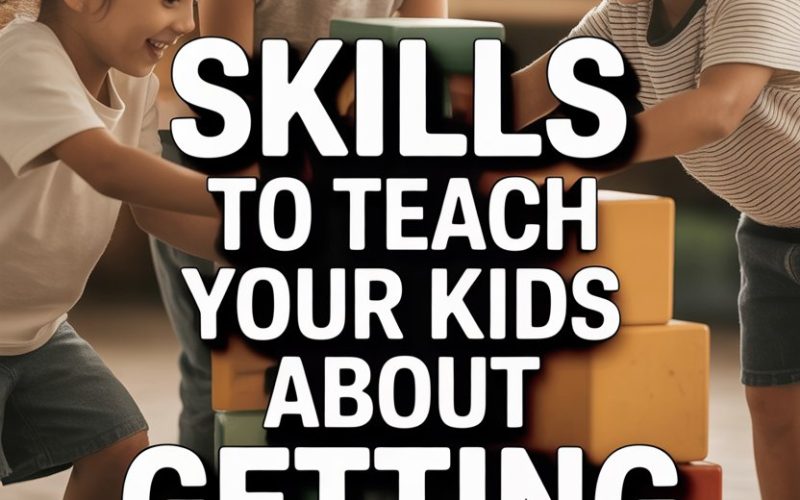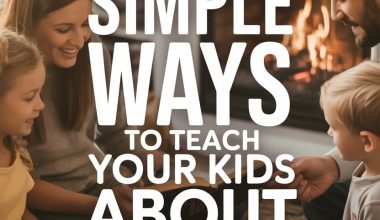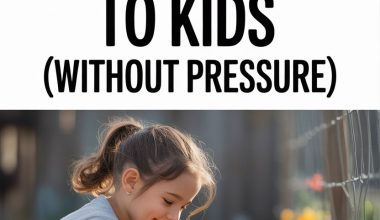Ever seen a group of children playing together and thought, “Ah, world peace is possible after all”?
Then, five minutes later, someone’s wailing, two are plotting revenge with Lego bricks, and one child is pretending to be a dog and eating crayons under the table.
Getting along isn’t something that happens by magic—or by osmosis through the snack cupboard. It’s a learned skill, and much like learning to tie shoelaces (bunny ears, anyone?), it takes time, patience, and lots of gentle reminders.
No one expects you to raise a perfectly harmonious flock that only disagrees over which brand of oat milk tastes best.
Still, a few tried-and-true strategies can help nudge your offspring toward peaceful(ish) coexistence, from preschool playdates to awkward teen group projects.
Here’s how to sneak some harmony-building lessons into your everyday chaos.
Model Reasonable Adulting
Children are world-class mimics—better at copying your dramatic sighs than folding laundry, but you get the idea.
If you’re snippy with your partner, sharp with the neighbour, or muttering about “idiots” in traffic (guilty!), your child is taking notes.
Try narrating your own peace-making, even if it feels a bit like you’re in a sitcom: “I’m frustrated you left your shoes in the hallway, but I’m going to ask nicely instead of stomping around.”
It’s surprising how much these little moments of calm, respectful communication seep in. According to the American Psychological Association, children who observe positive conflict resolution are more likely to mimic it with their peers.
Teach the Magic of “I Feel” Statements
Before you break out in hives remembering your last work-mandated active listening workshop, hear me out. “I feel” statements are gold for kids because they give little ones the tools to express themselves without launching a blame missile.
Try practicing: “I feel sad when you don’t share the crayons” instead of “You’re being mean!”
It helps everyone understand each other’s perspective, and research highlighted by Harvard University’s Center on the Developing Child shows that emotional literacy like this builds stronger relationships.
If your child’s version comes out as, “I feel like you’re the worst sister in the world,” don’t panic. Progress, not perfection.
Encourage Turn-Taking and Sharing (Yes, Again)
Ah, sharing. The Everest of early childhood. There are days when it feels like your child would rather donate a kidney than hand over the remote.
Don’t give up. Practicing turn-taking and sharing with siblings, friends, or even you—yes, you—can help kids internalise the idea that good things come to those who wait…sometimes.
Board games, baking, even trading roles during cleaning up (“You wipe, I sweep!”) all help reinforce this ancient concept.
One clever trick: use timers. “You can have the sparkly dinosaur for three minutes, then it’s your brother’s turn.”
Visual timers or kitchen timers work wonders, and there’s a reason child development experts suggest them for easing tension.
Practise Apologising—and Forgiving
Kids often treat apologies like vegetables: required, bland, and to be endured quickly. But learning to give—and accept—a sincere apology is a bedrock of getting along.
Model apologies yourself (“I’m sorry I snapped earlier, I was hangry”), and help your child move beyond a muttered “sorry” into actually making amends.
For younger ones, “Can you give your sister a hug or draw her a picture?” works better than a forced handshake.
Equally important: forgiveness. Remind your child that everyone makes mistakes, and forgiving others is a kindness to both the forgiver and the forgiven.
According to child psychologist Laura Markham, teaching children to let go of small grudges builds resilience and a more peaceful home. (And, allegedly, more peaceful family road trips.)
Explain Boundaries Without Turning Into a Bouncer
Everyone needs personal space, even if your toddler seems convinced that climbing into your jumper is their birthright. Teaching kids to set and respect boundaries is vital for healthy relationships.
Try role-playing: “If someone is sitting too close, what could you say?” or “If you don’t want to share your teddy right now, how can you tell your friend kindly?”
Emphasise that saying “no” politely is allowed, and respecting others’ “no” is just as important.
For children who struggle with this, social stories or picture books can help. Titles like “Personal Space Camp” by Julia Cook put these concepts on their level, sparking gentle conversations.
Help Kids Spot Emotions—In Themselves and Others
Children aren’t always great at figuring out if their friend is sad, mad, or just in need of a snack. Labelling feelings—both their own and others’—is an underrated secret to smoother playdates.
Try narrating feelings as you see them: “I think Jamie looks a bit upset. What do you think happened?” Use mirrors, picture books, and even TV shows to point out emotions.
There’s even a super-cute Feelings Wheel from Sesame Street that helps young children name what’s going on inside.
The more kids recognise emotions, the better they can respond with kindness or ask for help when things go pear-shaped.
Coach Problem-Solving Without Doing It All For Them
Parental reflexes are strong. See a squabble brewing and the urge to swoop in and referee can be overwhelming—especially if you’re running low on patience (or caffeine).
Instead of taking over, pause and ask: “What could we do to fix this?” or “Do you have any ideas for making this fair?” Even if their solutions are…creative (“Let’s both wear the Spiderman costume at once!”), they’re learning to negotiate.
Peer mediation is a prized skill, and studies from Child Mind Institute confirm that children who practise problem-solving end up more confident and less reliant on adults to sort everything out.
Mix in Praise and Positive Reinforcement
Catch them being good. Seriously—point it out when you see your children playing nicely, sharing snacks (without an arm-wrestle), or sorting out a disagreement with fewer fireworks.
A simple, “I saw how you asked for a turn, that was very kind,” goes farther than you might think. Positive reinforcement, according to parenting experts at Verywell Family, increases the odds you’ll see those harmonious behaviours again.
You might even manage a cup of tea in peace. No promises, but it could happen.
Make Room for Teamwork, Not Just Competition
Sibling rivalry or playground politics often centre around winning, but skills for getting along show up strongest during teamwork.
Whether it’s tidying up together, baking fairy cakes, or building a pillow fort worthy of an engineer, find ways your children can cooperate.
Talk about what went well after: “I liked how you two figured out who would hold the torch and who would stack the pillows.” Celebrate wins as a team, not just as individuals.
Surprisingly, research from Stanford shows that even young kids are wired to cooperate—they just need a little nudge (and maybe a snack bribe).
Use Play and Stories to ‘Sneak In’ Social Skills
Sometimes, the best learning happens when kids don’t know they’re learning at all. Board games, card games, and cooperative video games are natural spaces for teaching turn-taking, fairness, and friendly banter.
Storytime is another great opportunity. Stories like “Enemy Pie” by Derek Munson or “The Invisible Boy” by Trudy Ludwig spark discussions about empathy, making amends, and seeing things from someone else’s perspective.
Don’t forget about role-play, too. Take turns pretending to be the “grumpy friend” or the “helpful classmate” and see where the conversation goes.
Bonus: it’s hilarious for everyone involved.
When Sibling Squabbles Aren’t Just Background Noise
Not every argument needs your intervention—sometimes, a bit of bickering is just part of growing up.
But if you’re seeing repeated conflicts, name-calling, exclusion, or one child always “losing” in the power dynamic, it’s worth stepping in.
Set clear family rules: “No name-calling” and “Everyone gets a turn to talk” are simple, enforceable standards. Then, stick to them—yes, even when you’re tempted to hide in the loo with your phone.
When things get heated, a cooling-off period can help. Head outside, put on some music, or simply separate for a minute.
Emotional regulation is a big skill, and sometimes adults need a time-out, too.
Accept That Some Days, Getting Along Means ‘Agreeing to Disagree’
Even with all the wisdom, there are moments when your kids simply won’t see eye to eye. (Insert every family board game night ever here.)
The goal isn’t to eliminate conflict entirely, but to help your children handle disagreements respectfully and recover afterwards.
If your family has a rough patch—shouting, slammed doors, or the silent treatment—reconnect later with some shared silliness or a movie night. Laughter does wonders for rebuilding bridges.
Growing Relationship Skills One Messy Day at a Time
Teaching children to get along can be noisy, messy, and sometimes feel like herding cats who also dislike each other. That’s normal.
Every act of sharing, every awkward apology, and every giggle-filled group activity is another brick in the foundation of lifelong social skills.
Your children might not turn into peacemakers overnight, but with your example and a few gentle nudges, they’ll build the tools they need to weather playground politics, sibling squabbles, and, one day, that most daunting of all group activities: the family WhatsApp chat.
Cup of tea, anyone? You’ve earned it.





